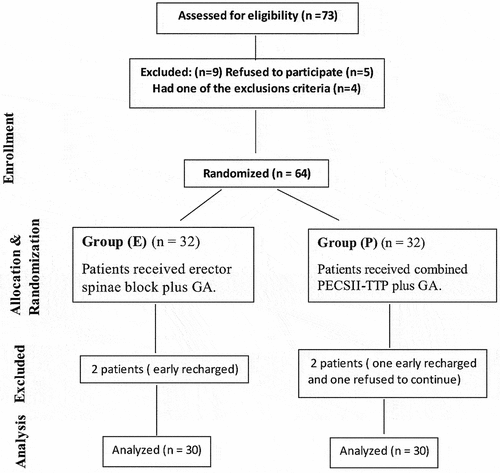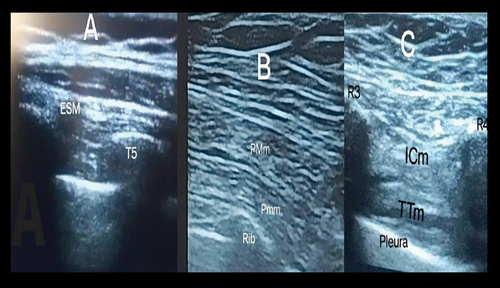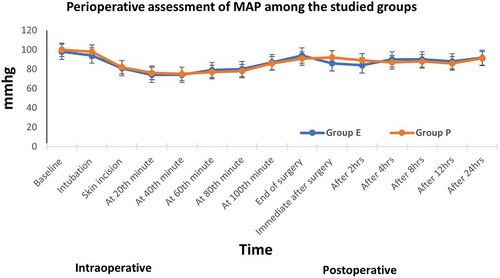Figures & data
Figure 1. Consort flow chart of the two studied groups.

Figure 2. Ultrasonographic visualization of different study blocks.

Table 1. Demographic and baseline data, operative time, fluid intake, procedure-related complications (hypotension), ephedrine dose, and post-operative complications in the two studied groups.
Table 2. Recovery time, morphine consumption, time to first analgesia, and IL6 levels among the studied groups.


